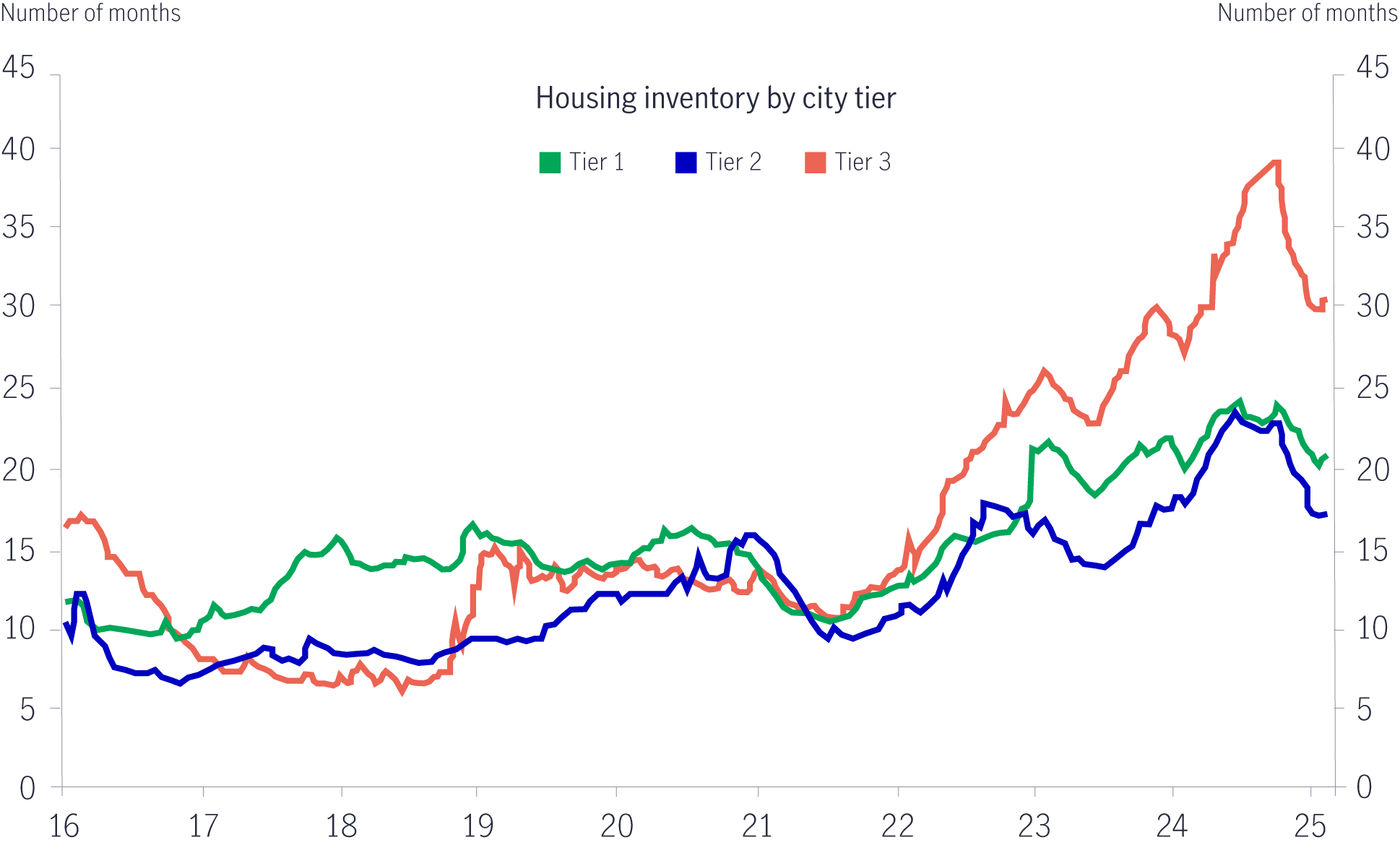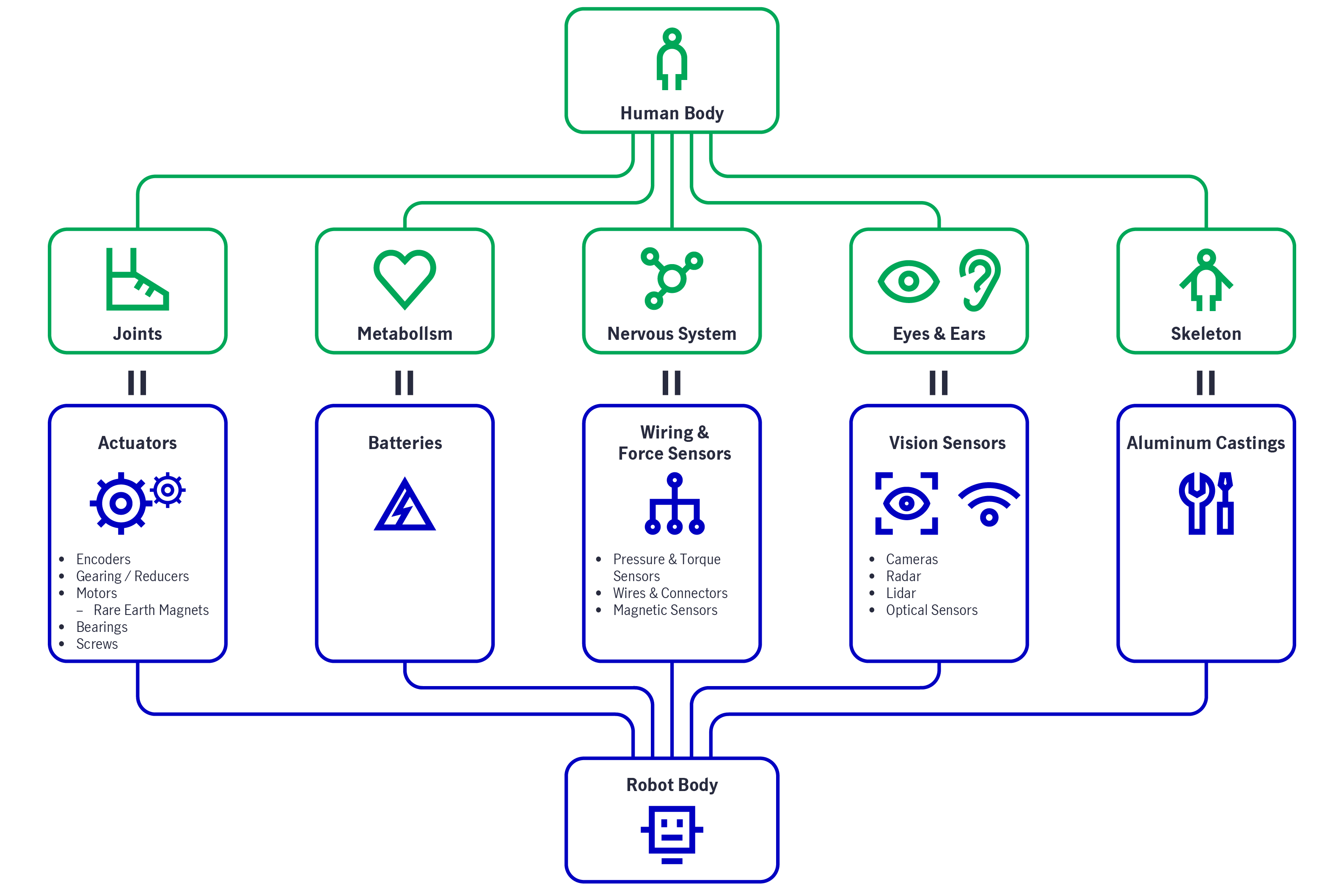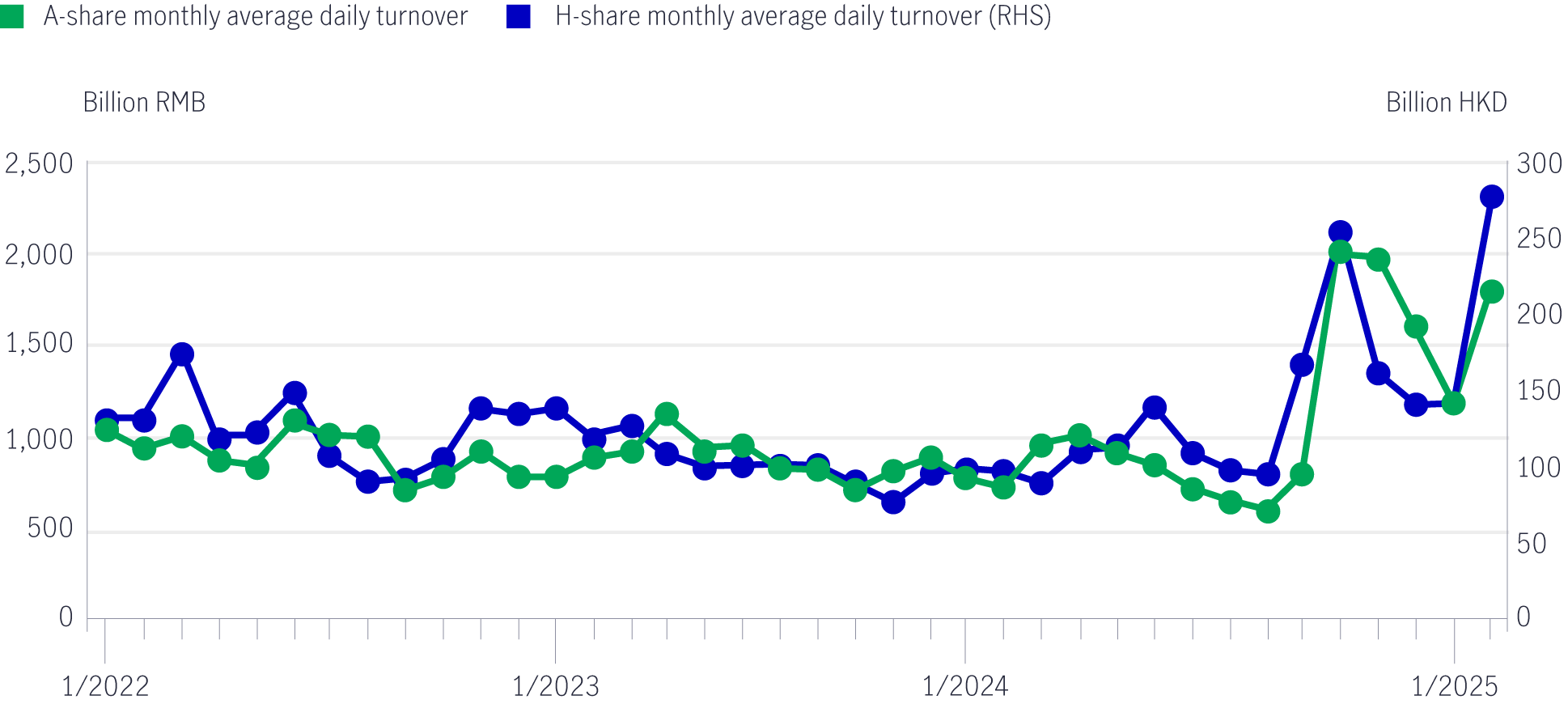The case for liquid real assets in a shifting inflation regime
For over a decade, global investors operated under the assumption that inflation would remain subdued, anchored below 2% - a belief reinforced by central bank credibility and structural disinflationary forces like globalisation and technological deflation. However, the post-pandemic world has ushered in a new regime of structurally higher inflation risks, with evolving policy responses that make liquid real assets increasingly attractive.
Greater China Equities: Perspective for Q4 2025
Heading into the final quarter of the year, we remain constructive, supported by the US Federal Reserve interest rate cutting cycle, Mainland’s demand-side stimulus, strategic priorities outlined in the 15th Five-Year Plan, continued recovery in corporate earnings and robust fund inflows.
Q&A: Potential market impact of a US government shutdown
The US Senate failed to pass a last-minute funding deal, triggering the first federal government shutdown in nearly seven years starting from 1 October. Our Multi-Asset Solutions Team shares insights on how markets have responded during past shutdowns, and how investors can position themselves amid the uncertainty.
The case for liquid real assets in a shifting inflation regime
For over a decade, global investors operated under the assumption that inflation would remain subdued, anchored below 2% - a belief reinforced by central bank credibility and structural disinflationary forces like globalisation and technological deflation. However, the post-pandemic world has ushered in a new regime of structurally higher inflation risks, with evolving policy responses that make liquid real assets increasingly attractive.
Greater China Equities: Perspective for Q4 2025
Heading into the final quarter of the year, we remain constructive, supported by the US Federal Reserve interest rate cutting cycle, Mainland’s demand-side stimulus, strategic priorities outlined in the 15th Five-Year Plan, continued recovery in corporate earnings and robust fund inflows.
Q&A: Potential market impact of a US government shutdown
The US Senate failed to pass a last-minute funding deal, triggering the first federal government shutdown in nearly seven years starting from 1 October. Our Multi-Asset Solutions Team shares insights on how markets have responded during past shutdowns, and how investors can position themselves amid the uncertainty.
12 March 2025
Kai Kong Chay, Senior Portfolio Manager, Greater China Equities
Wenlin Li, Senior Portfolio Manager, Greater China Equities


As we progress through 2025, Greater China equities have demonstrated strong performance, particularly Hong Kong equities, which have been supported by southbound inflows. In addition to the recent breakthroughs in AI and humanoid robot development, we observe other positive catalysts that further support the region’s market.
Greater China equities showed resilience year-to-date in 2025, with the Hang Seng Index rising by 22.1%, the Hang Seng China Enterprises Index (HSCEI) gaining 23.3%, and the MSCI China Index increasing by 20.8%. (see table below)1.
2025 year-to-date performance of Greater China equity indices1
| Indices | Total returns in USD (%) |
| Hang Seng TECH Index | +35.82 |
| Hang Seng China Enterprises Index | +23.33 |
| Hang Seng Index | +22.21 |
| MSCI China Index | +20.83 |
| MSCI Zhong Hua Index | +19.48 |
| Shanghai Stock Exchange Composite Index | +2.02 |
Besides the DeepSeek AI breakthrough (which prompts acceleration of AI adoption in mainland China) and humanoid robot development, there are other positive catalysts as we move into the rest of 2025.
(1) Positive policy signals
On 24 February, Mr Wu Qing, Chairman of the China Securities Regulatory Commission (CSRC), published an article in the Journal of New Industrialization highlighting mainland China’s development priorities, particularly in fostering technologically innovative high-end manufacturing and new-industry companies.
(2) Positive messages from China’s National People's Congress (NPC) meeting
The key messages from work report from China’s NPC meeting are largely in-line with our view. The targets span across various areas, which are holistic and help navigate macro uncertainties and boost domestic growth. Domestic demand is key for 2025.
Key targets and priorities announced in NPC meeting2
| Areas | Details |
| Monetary and fiscal policy | • Budget deficit ratio set at around 4% of GDP • RMB 500 billion of new special sovereign bonds for big banks • RMB 4.4 trillion of new special local government bonds in 2025 • RMB 1.3 trillion of ultra-long special sovereign bonds • May cut required reserve ratio (RRR) and interest rates when time is appropriate • To coordinate reforms of fiscal and tax systems |
| Economy | • China vows to make domestic demand the main economic driver in 2025 • Gross domestic product (GDP) growth target at around 5% • CPI growth target at ~2% • Target urban unemployment rate of about 5.5% in 2025 • To carry out special initiatives to boost consumption • To maintain basic stability of the RMB • Plans 7.2% increase in 2025 defense spending |
| Property | • Give local governments more autonomy in acquiring homes • To expand scope of affordable housing relending |
| Technology | • To increase funding to bio-manufacturing and quantum technology • To develop a system of open-source models for AI & 6G technology • To support extensive application of large-scale AI models |
| Energy and agriculture | • Target -3% energy use per unit of GDP for 2025 • To develop intelligent new energy cars |
| Health Care | • To refine policy for centralized medicine procurement • China subsidy for resident medical care to be raised by RMB30 per person • To support and encourage private investment • To support cross-border e-commerce, boost logistics system • To improve policies on volume-based drug procurement |
(3) Recovery pace of mainland China’s property market
Some positive data points include:
Housing inventory ratios fell significantly in recent months, driven by improving sales3

(4) Additional support for the mainland China banking sector
During the China NPC meeting, China announced RMB 500 billion of new special sovereign bonds for banks, which lends support to banks as well as a broad range of sectors, including consumer, property and industrials.
Dissecting the humanoid body4

The recent development and encouraging technological breakthrough are positive drivers for Greater China equity markets in 2025. We continue to favour technology, media, and telecommunications (TMT) and platform companies (with AI adoption acceleration, advanced manufacturing companies with go-global strategies, edge AI beneficiaries (e.g. AI smartphones and AI PCs), as well as the robotic supply chain.
• Mainland China’s southbound flows remain strong.
Turnover in both A-share and H-share markets accelerated in January and February 2025

Source: Wind, Hong Kong Stock Exchange, HSBC GR, as of 26 February 2025. February 2025 data is up to 24 February 2025.
We see positive catalysts which further support the Greater China equity markets. These include supportive policies aimed at addressing the capital-raising needs of innovative high-end manufacturing and new-industry companies, a series of domestic growth measures announced during the NPC meeting, a recovering mainland property market, and potential additional recapitalization in the mainland banking sector. As we anticipate more innovation in the humanoid robot industry and faster development in autonomous driving, we continue to favour technology, media, and telecommunications (TMT) and platform companies, advanced manufacturing companies with go-global strategies, edge AI beneficiaries, as well as the robotic supply chain.
1 Bloomberg, data as of 6 March 2025. Total returns in USD. Past performance is not indicative of future performance.
2 NPC meeting, 5 March 2025.
3 Source: GS research, 11 February 2025.
4 Morgan Stanley Research.
2026 Outlook Series: Greater China Equities
Greater China equity markets registered a strong equity rally in 2025 to date, driven by technology breakthroughs, demand for localisation, go-global demand, and upward earnings growth revisions. We reiterate a positive view on Greater China equity markets going into 2026 as we believe Mainland and Taiwan are well-positioned to drive high-quality growth to the next level.
2026 Global Macroeconomic Outlook: clearer picture, better growth
Our 2026 macro outlook highlights key themes across global economies and commodities, what we'll be watching closely in the new year, and portfolio takeaways for investors to consider.
The case for liquid real assets in a shifting inflation regime
For over a decade, global investors operated under the assumption that inflation would remain subdued, anchored below 2% - a belief reinforced by central bank credibility and structural disinflationary forces like globalisation and technological deflation. However, the post-pandemic world has ushered in a new regime of structurally higher inflation risks, with evolving policy responses that make liquid real assets increasingly attractive.
The case for liquid real assets in a shifting inflation regime
For over a decade, global investors operated under the assumption that inflation would remain subdued, anchored below 2% - a belief reinforced by central bank credibility and structural disinflationary forces like globalisation and technological deflation. However, the post-pandemic world has ushered in a new regime of structurally higher inflation risks, with evolving policy responses that make liquid real assets increasingly attractive.
Greater China Equities: Perspective for Q4 2025
Heading into the final quarter of the year, we remain constructive, supported by the US Federal Reserve interest rate cutting cycle, Mainland’s demand-side stimulus, strategic priorities outlined in the 15th Five-Year Plan, continued recovery in corporate earnings and robust fund inflows.
Q&A: Potential market impact of a US government shutdown
The US Senate failed to pass a last-minute funding deal, triggering the first federal government shutdown in nearly seven years starting from 1 October. Our Multi-Asset Solutions Team shares insights on how markets have responded during past shutdowns, and how investors can position themselves amid the uncertainty.